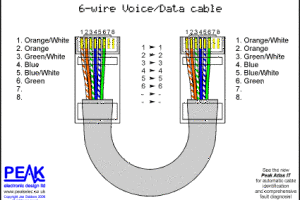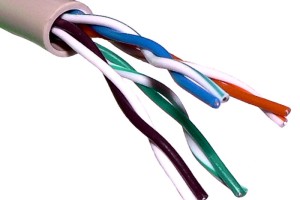Fiber Optic Networks Vs Copper Network Cabling: Which is better?
People have been using copper network cabling for their telephone and internet access for over two decades now. It is becoming easier to access fiber optic networks than ever before, thank to programs like Verizon FIOS and AT&T U Verse. When you compare the two types of cable, which one is actually better?
Elemental Resistance
Copper cable has always proven temperamental when it comes to the environment. Beach front properties have often found that they have to replace their cabling frequently due to corrosion caused by salt air and saltwater. Fiber optic cables are resistant to most type of corrosion and don’t need be replaced as often, if at all.
Score: Copper 0, Fiber Optic 1.
Counting your Pennies
Due to shortages, the price of copper has skyrocketed. Thanks to this fact, the price of installing traditional copper cabling for internet or telephone services is 2 to 3 times the cost of installing fiber optic cables for the same services. As the service becomes more and more streamlined, the price of fiber optics will continue to fall.
Score: Copper 0, Fiber Optic 2.
Turn Out That Light!
Fiber optic cables are becoming popular because of the fact that they can be used to help curb energy usage. Copper cables, on the other hand, can use up to 5 times as much energy as fiber cables of comparable thickness.
Score: Copper 0, Fiber Optic 3.
Easy Upgrades
Upgrading your bandwidth if your system still uses copper cable can be a chore. Your cable company has to come in, tear out the old cable, and install a thicker one that can carry more data. With fiber cables, all your company has to do is flip a switch and upgrade your bandwidth. Replacing the cables is not necessary.
Score: Copper 0, Fiber Optic 4.
Go the Distance
It is much easier to work with fiber optic cables when distance is a factor. Traditional copper cables can only reach about 100 meters from the electronics before an amplifier or junction box is needed. Fiber optic cables can reach up to 300 kilometers, up to 30 times as far as traditional cables. This becomes especially important if you need to run an internet service throughout a large building or complex.
Score: Copper 0, Fiber Optic 5.
Keep it Secure
Tapping a copper internet or telephone cable is actually easier than it sounds. Unscrupulous types have been known to tap into a traditional copper internet line to obtain free internet service. Splicing in to a fiber optic line is nearly impossible for someone without proper training or experience. All it does, in most cases, is create breach of service.
Score: Copper 0, Fiber Optic 6. Game, set, match.
These are only a few of the things that you should consider when deciding whether to settle for a more traditional copper network cabling or upgrade to a fiber optic system. Fiber optics, as this list shows, is quickly outmatching copper cable in almost all aspects. Only time will tell what these telecom companies will come up with next.




